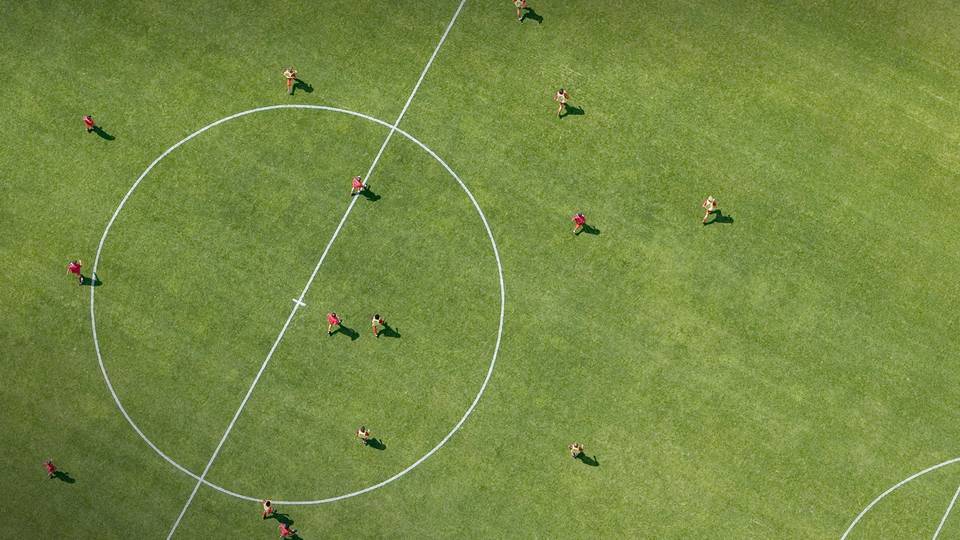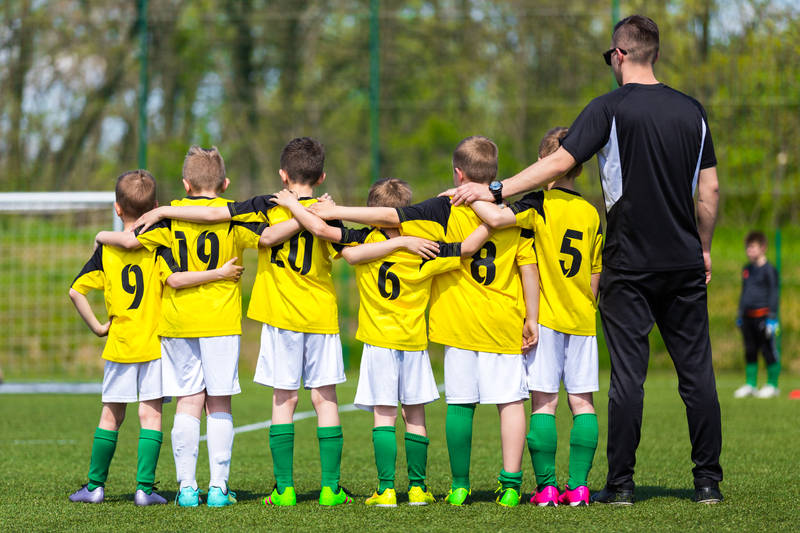Selecting the right nets for 9-a-side football goals is essential for both match play and training sessions. Whether you're coaching youth teams or managing a club's equipment, quality nets designed specifically for 16ft x 7ft goals ensure proper gameplay and durability throughout the season. 9-a-side football nets come in various styles including straightback and short runback options, with the latter being particularly suitable for self-weighted goals.
Football clubs across the UK rely on purpose-built 9v9 nets that fit securely to standard 16ft x 7ft frames. These nets are manufactured by trusted brands like Harrod UK, Samba, FORZA, and Diamond Soccer Company, offering reliability for both practice and regulated matches. The specifications are designed to meet youth football requirements while also serving as effective training equipment for adult teams.
When selecting nets, consider factors such as material quality, mesh size, and installation method to ensure they withstand British weather conditions. Many suppliers stock 9-a-side nets ready for quick dispatch, making it convenient to replace damaged equipment without disrupting your soccer programme. Different runback depths are available depending on your specific ground requirements and storage capabilities.
Overview of 9-A-Side Football Goals
9-a-side football provides a bridge between mini soccer and full-sized youth football, particularly for under 11s and under 12s. These goals are specifically designed to be proportional to player heights while offering professional-quality durability and strength.
9v9 Goal Dimensions
The standard dimensions for 9-a-side football goals are 16ft x 7ft (4.88m x 2.13m). This size is carefully selected to be proportionate to the height of younger players competing at this level. The reduced size compared to full-sized 11-a-side goals (24ft x 8ft) creates a balanced playing experience.
For senior 9-a-side matches played on smaller pitches, slightly larger goals measuring 21ft x 7ft are sometimes recommended. This variation accommodates the different physical capabilities of adult players.
The proportional sizing is crucial for player development, allowing young goalkeepers to effectively cover their goal while still presenting an appropriate challenge for outfield players.
Standard Materials for Construction
Most 9-a-side football goals are constructed from high-grade aluminium. This material offers an ideal balance of strength, durability and lightweight properties that make the goals both sturdy and portable.
The nets attached to these frames are manufactured to professional standards, using the same quality materials found in full-sized goal nets. This ensures maximum durability even under regular use in various weather conditions.
Many premium 9-a-side goals are manufactured in Great Britain, with strict quality control standards. These aluminium goals typically feature weatherproof coatings to prevent rusting and deterioration.
The frame construction usually allows for either permanent installation with ground sockets or free-standing options with counterweights for temporary setups. This versatility makes them suitable for both dedicated youth pitches and multi-purpose training facilities.
Goalpost Features and Accessories
Quality 9v9 football goals require proper accessories for functionality, safety, and longevity. The right components ensure goals remain stable during play while allowing for easy setup and maintenance.
Net Clips and Their Importance
Net clips are essential yet often overlooked components in goal setup. These small plastic or metal fasteners secure the net to the frame, preventing sagging and ensuring balls remain inside the goal when scored.
Standard clips typically come in packs of 50-100 and attach to the goal frame with a simple push-fit design. For higher quality setups, quick-release clips allow for faster net removal during maintenance or storage.
Weather-resistant clips are worth the investment as they prevent rusting and deterioration. Many coaches recommend having spare clips available, as they can occasionally break during regular use or harsh weather conditions.
Properly spaced clips (typically every 30-45cm) prevent ball escape and maintain professional appearance. Some premium goals feature integrated clip channels that provide more secure attachment points.
Locking Systems for Enhanced Safety
Modern 9v9 folding freestanding aluminium goals incorporate essential locking systems that prevent collapse during play. These safety features are particularly important in youth football where proper equipment maintenance directly impacts player welfare.
Premium models feature quick-release mechanisms that allow for secure assembly without tools. These systems typically use pull-pins or twist-lock designs that prevent accidental disassembly during matches.
UPVC goals often utilise push-button locking mechanisms for crossbars and corner joints. Steel-framed options may incorporate bolted connections with safety caps to prevent injury from exposed hardware.
The FA recommends regular inspection of locking components to ensure continued functionality. Replacement parts should be sourced from original manufacturers to maintain structural integrity.
Goals should never be used without properly engaged locking systems, regardless of whether for training or match play.
Net Supports and Stability
Net supports provide essential structure to keep netting taut and properly positioned behind the goalmouth. Standard supports include rear stanchions, side poles, and ground pegs that work together to create the proper net shape.
Continental-style net supports extend diagonally from the top corners, creating deeper goals that accommodate diving keepers. These supports typically feature adjustable lengths to customise the net depth according to preference or regulations.
Ground anchors are critical for safety, preventing tip-over during windy conditions or when players collide with frames. Regulations require a minimum of four anchor points for 16'×7' goals used in 9v9 matches.
Premium net support systems incorporate tensioning wires to maintain perfect net shape. These allow groundskeepers to quickly adjust tension without removing the entire net.
For indoor facilities, weighted supports replace traditional anchors, providing stability without damaging flooring. These typically use sand or water-filled chambers integrated into the support design.
Compliance and Safety Standards
Safety regulations for football goals are essential to prevent accidents and injuries on the pitch. Properly certified equipment ensures that both players and spectators remain protected during matches and training sessions.
Meeting BS EN 16579 Requirements
BS EN 16579 is the current British and European safety standard specifically designed for movable goals. This standard replaced the previous BS EN 748 in 2018 and outlines rigorous testing requirements to ensure goal stability.
All 9v9 football nets must comply with these regulations, which test for:
- Stability - Goals must resist tipping when force is applied
- Strength - Frame must withstand significant impact without failure
- Entrapment risks - No gaps that could trap fingers or limbs
- Sharp edges - All surfaces must be smooth and properly finished
Manufacturers must provide clear setup and maintenance instructions with their products. Goals should also display permanent warning labels about the dangers of climbing on frames or hanging from crossbars.
Endorsements by Football Foundation
The Football Foundation, the UK's largest sports charity, requires all funded facilities to use goals that comply with safety standards. Their endorsement serves as an additional quality assurance for clubs purchasing new equipment.
Equipment endorsed by the Foundation undergoes additional verification processes beyond basic compliance. These checks ensure that materials are durable enough for British weather conditions and regular use.
The Foundation publishes a regularly updated list of approved suppliers and products on their website. Many manufacturers actively seek this endorsement to demonstrate their commitment to safety.
For grassroots clubs, purchasing Foundation-endorsed goals can sometimes unlock additional funding opportunities. This makes investing in properly certified equipment both safer and potentially more cost-effective in the long term.
Buying and Maintenance Guide
Investing in quality 9-aside football nets requires careful consideration of several factors to ensure durability and value for money. Proper selection, installation and regular maintenance will significantly extend the lifespan of your equipment.
Selecting the Appropriate Twine Thickness
When purchasing football nets for 9v9 play, twine thickness is a crucial specification that directly impacts durability. Standard nets typically feature 2mm to 3mm twine, suitable for occasional use and training sessions.
For more intensive usage or competitive matches, consider nets with 3mm to 4mm twine thickness. These provide greater resistance to damage from powerful shots and adverse weather conditions.
Premium nets with 4mm+ thickness offer maximum durability but come at a higher price point of £350-£500. These are ideal for clubs with frequent usage requirements or facilities in exposed locations.
The mesh size also affects ball retention – smaller mesh patterns prevent smaller training equipment from passing through but may collect more debris. Consider your specific usage needs before making a selection.
Delivery and Assembly Considerations
Most suppliers offer delivery to mainland GB, with costs typically ranging from £15-£30 depending on the net size and weight. Larger 16'x7' (standard 9-aside size) nets may incur additional delivery charges.
Request specific delivery timeframes when ordering, as nets are bulky items requiring adequate space for delivery. Many suppliers offer scheduled delivery slots to ensure someone is available to receive the equipment.
Assembly complexity varies between brands and models. Freestanding goals typically require more assembly time (30-60 minutes) than wall-mounted options.
Always check that all necessary components are included:
- Frame sections
- Net clips or hooks
- Ground anchors for freestanding goals
- Assembly instructions
- Warranty documentation
Maintenance Tips for Long-Term Use
Regular inspection forms the cornerstone of effective net maintenance. Check for tears, fraying or loose connections after each training session or match. Small damages should be repaired immediately to prevent larger issues.
Protect your investment by:
- Removing nets during extended periods of non-use
- Storing in dry conditions when not in use
- Using proper net hooks rather than cable ties which can damage the twine
- Avoiding dragging nets across rough surfaces
For metal goal frames, inspect for rust or structural damage quarterly. Apply appropriate paint or protective coating annually to extend frame life.
Weather-proofing treatments can be applied to nets to improve resistance to UV damage and moisture. These treatments typically need reapplication every 6-12 months depending on exposure levels.
Properly maintained football nets should last 3-5 years even with regular usage, representing excellent value compared to frequent replacements of lower quality equipment.












